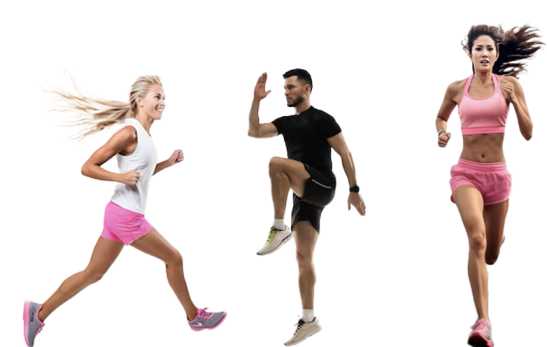Reading passage 1
The bicycle was not invented by one individual or in one country. It took nearly 100 years and many individuals for the modern bicycle to be born. By the end of those 100 years, bicycles had revolutionised the way people travel from place to place.
Bicycles first appeared in Scotland in the early 1800s, and were called velocipedes. These early bicycles had two wheels, but they had no pedals. The rider sat on a pillow and walked his feet along the ground to move his velocipede forward.
Soon a French inventor added pedals to the front wheel. Instead of walking their vehicles, riders used their feet to run the pedals. However, pedalling was hard because velocipedes were very heavy. The framework was made of solid steel tubes and the wooden wheels were covered with steel. Even so, velocipedes were popular among rich young men, who raced them in Paris parks.
Because of the velocipedes were so hard to ride, no one thought about using them for transportation. People didn’t ride velocipedes to the market or to their jobs. Instead, people thought velocipedes were just toys.
Around 1870, American manufacturers saw that velocipedes were very popular overseas. They began building velocipedes, too, but with one difference. They made the frameworks from hollow steel tubes. This alteration made velocipedes much lighter, but riders still had to work hard to pedal just a short distance. In addition, roads were bumpy so steering was difficult. In fact, most riders preferred indoor tracks where they could rent a velocipede for a small fee and take riding lessons.
Subsequent changes by British engineers altered the wheels to make pedalling more efficient. They saw that when a rider turned the pedals once, the front wheel turned once. If the front wheel was small, the bicycle travelled just a small distance with each turn. They reasoned that if the front wheel were larger, the bicycle would travel a greater distance. So they designed a bicycle with a giant front wheel. They made the rear wheel small. Its primary purpose was to help the rider balance. Balancing was hard because the rider had to sit high above the giant front wheel in order to reach the pedals. This meant he was in danger of falling off the bicycle and injuring himself if he lost his balance. Despite this inherent danger, “high-wheelers” became very popular in England.
American manufacturers once again tried to design a better bicycle. Their goal was to make a safer bicycle. They substituted a small wheel for the giant front wheel and put the driving mechanism in a larger rear to wheel. It would be impossible for a rider to pedal the rear wheel, so engineers designed a system of foot levers. By pressing first the right one and then the left, the rider moved a long metal bar up and down. This bar turned the rear axle. This axle turned the rear wheel and the bicycle minimised the dangers inherent in bicycle riding, more and more people began using bicycles in their daily activities.
The British altered the design one last time. They made the two wheels equal in size and created a mechanism that uses a chain to turn the rear wheel. With this final change, the modern bicycle was born.
Subsequent improvements, such as brakes, rubber tires, and lights were added to make bicycles more comfortable to ride. By 1900, bicycle riding had become very popular with men and women of all ages. Bicycles revolutionised the way people worldwide ride bicycles for transportation, enjoyment, sport, and exercise.
Questions 1-6
Complete the sentences. Choose NO MORE THAN THREE WORDS from the passage above for each answer.
In the invention of the bicycle took part not only one individual or the country, but the world in general during the 1…………………… years. This invention was firstly found in Scotland in the first decades of 1800, and was known as velocipedes. They were not resembled to today’s bicycles and had two wheels, but they had no 2…………………… . The rider sat on a pillow and walked his feet along the ground in order to move his velocipede forward. Soon, a French inventor added pedals to the front wheel. However, because of their difficulty in riding, nobody used them in a daily life, and they were accepted as 3…………………… . Around 1870, manufacturers in America found that this invention is popular 4…………………… , but within the difference: frameworks were made from 5…………………… , what makes them much lighter. Soon, the British inventors found the method which can make pedalling more efficient to turn pedals one by one. They designed a bicycle with a giant front wheel. However, as the rider had to sit high above the giant front wheel it was too difficult to keep the balance. The safer bicycle was invented by Americans. They designed the rear 6…………………… , which minimised the danger of falling and injuring. At last, the British changed the design one last time and added two wheels equal in size and the mechanism that induce a chain to turn the rear wheel. By this there was invented the example of the modem bicycle.
Questions 7-10
Do the following statements agree with the information given in Reading Passage 1? Write
TRUE if the statement agrees with the information
FALSE if the statement contradicts the information
NOT GIVEN if there is no information on this
7 The bicycle was invited by Americans only
8 It was too hard to lead the velocipedes due to their heaviness
9 The alteration of velocipedes made the life of people much more easy
10 The changes by British inventors altered the wheels to make pedalling more efficient
Questions 11-13
Complete the sentences. Choose NO MORE THAN THREE WORDS from the passage for each answer.
11 The British inventors concluded that if the front wheel were large in ____________ , the bicycle would travel comparatively long distance.
12 American engineers designed a system of ____________ which was driven by pressing first the right and then the left pedals.
13 The last, but not least alteration in creating of the modern bicycle was a making the two wheels equal in size and using the __________ to spin the rear wheel.
Reading Passage 2. Questions 14-26
Segway into the Future
Will the electric vehicle known as the Segway alter the ways that individuals get around? Dean Kamer, the inventor of the Segway, believes that this revolutionary vehicle will someday substitute for the bicycles and automobiles that now crowd our cities. When he introduced the Segway in 2001, he believed it would change our lives.
Although the Segway uses up-to-the-minute technology, it looks very ordinary. The metal framework of the Segway consists of a platform where an individual stands. Attached to the front of the platform is a tall post with handles for the driver to hold. On each side of the platform is a wide, rubber wheel. Except for these two wheels, there are no mechanical parts on the Segway. It has no engine, no brakes, no pedal power, no gears, and no steering wheel. Instead it uses a computer system that imitates the ability of humans to keep their balance.
This system seems to move to the driver’s thoughts. For example, when the driver thinks “Go forward”, the Segway moves forwards, and when the driver thinks, “Stop”, it stops. The Segway is not really responding to the driver’s thoughts, but to the tiny changes in balance that the driver makes as he prepares his body to move forward or to stop. For example, when the driver thinks about moving forward, he actually leans slightly forward, and when he thinks of stopping or slowing, the driver leans slightly back.
The Segway is powered by batteries that allow it to travel about 17 miles on one battery charge. It is designed for short-range, low-speed operation. It has three speed settings. The slowest is the setting for learning, with speeds of up to 6 miles per hour. Next is the sidewalk setting, with speeds of up to 9 miles per hour. The highest setting allows the driver to travel up to 12.5 miles per hour in open, flat areas. At all three speed settings, the Segway can go wherever a person can walk, both indoors and outdoors.
Workers who must walk a lot in their jobs might be the primary users of Segways. For example, police officers could drive Segways to patrol city streets, and mail carriers could drive from house to house to deliver letters and packages. Farmers could quickly inspect distant fields and barns, and rangers, or parks. Security guards could protect neighbourhoods or large buildings.
Any task requiring a lot of walking could be made easier. In cities, shoppers could leave their cars at home and ride Segway from store to store. Also, people who cannot comfortably walk due to age, illness, or injury could minimise their walking but still be able to go many places on a Segway.
Why is it, then, that our job sites, parks, and shopping centres have not been subsequently filled with Segways since they were introduced in 2001? Why hasn’t the expected revolution taken place? Studies have shown that Segways can help workers get more done in a shorter time. This saves money. Engineers admire Segways as a technological marvel.
Business, government agencies, and individuals, however, have been unwilling to accept the Segway. Yes, there have been some successes. In a few cities, for example, mail carriers drive Segway on their routes, and police officers patrol on Segways. San Francisco, California, and Florence, Italy, are among several cities in the world that offer tours on Segways for a small fee. Occasionally you will see golfers riding Segways around golf courses. Throughout the world more than 150 security agencies use Segways, and China has recently entered the overseas market. These examples are encouraging, but can hardly be called a revolution.
The primary reason seems to be that people have an inherent fear of doing something new. They fear others will laugh at them for buying a “toy”. They fear losing control of the vehicle. They fear being injured. They fear not knowing the rules for using a Segway. They fear making people angry if they ride on the sidewalk. All these fears and others have kept sales low.
The inventor explained why people have been slow to accept the Segway. He said, “We didn’t realise that although technology moves very quickly, people’s mind-set changes very slowly.” Perhaps a hundred years from now millions of people around the world will be riding Segways.
Questions 14-16
Do the following statements agree with the information given in Reading Passage 2?
TRUE if the statement agrees with the information
FALSE if the statement contradicts the information
NOT GIVEN if there is no information on this
14 The Segway’s framework consists of a platform and a post with handles
15 The driver can alter the direction of the Segway by leaning to the left or right
16 The Segway was primarily designed for student to make their travel much more comfortable
Questions 17-19
Choose the correct letter, А , В, C or D.
17 Why the Segway has been accepted as the most comfortable vehicle for the people with moving problems?
A they could leave their cars at home and ride Segway from store to store
В they could drive from house to house to deliver letters and packages
C they could quickly inspect distant fields and barns, and rangers, or parks
D it could minimise their walking
18 Why people have been slow to accept the Segway?
A it wastes too much money
В people have various kinds of fears
C it was too hard to manage
D people didn’t want to replace the existing vehicles
19 According to the point of view of the Dean Kamer, “although technology moves very quickly, people’s mindset changes very slowly”, what he meant by this?
A people cannot accept the innovation at once
В because of people worldwide who ride bicycles for transportation they cannot accept other kinds of vehicles
C people have fears and thus cannot get accustomed with new forms of transportation
D the ideas and attitudes with which a person approaches a situation cannot be quickly altered
Questions 20-27
Complete the sentences. Choose NO MORE THAN THREE WORDS from the passage for each answer.
Dean Kamer, the inventor of the Segway, believes that this revolutionary vehicle will replace all conveyances we use today, and in 2001 he presented his innovation to the public. Even though the Segway uses up the minimum energy, it has a very 20…………………… appearance. It has no engine, brakes, gears or even 21…………………… , however, the attribute is that it has the 22…………………… with wide rubber wheels. Moreover, this invention is designed for the short-term destinations and works with 23…………………… . As it minimises the moving time or energy, the Segway particularly fits to those people who has an active lifestyle such as 24…………………… , mail carriers, farmers, security guards and even those who have difficulties because of their 25…………………… or…………. . However, the inventor explains why people have difficulties in accepting the Segway. He believes that the main reason for this is that people have an innate 26 ……………….. of innovations and because of that the people’s 27…………………… always changes gradually, it is too hard to accept the new invention for the short time.
Reading passage 3. Questions 28-40
The Meaning of Volunteering
A Volunteering, as some people consider mistakenly is a plethora of people from all walks of life as well as activities, but data from the other side of the world suggest otherwise. For example, a survey on who participated in volunteering by the Office for National Statistics (ONS) in the United Kingdom (UK) showed that people in higher income households are more likely than others to volunteer. In England and Wales, 57% of adults with gross annual household incomes of ?75.000 or more, have volunteered formally in the 12 months prior to the survey date. They were almost twice more likely to have done so than those living in households with as annual income under ?10.000.
В As well as having high household incomes, volunteers also tend to have higher academic qualifications, be in higher socio-economic groups and be in employment. Among people with a degree or postgraduate qualification, 79 per cent had volunteered informally and 57 per cent had volunteered formally in the previous 12 months. For people with no qualifications the corresponding proportions were 52 per cent and 23 per cent at all. However, voluntary work is certainly not the exclusive preserve of the rich. Does the answer not lie perhaps in the fact that the rich tend to have money to allow them the time to be become involved in voluntary work compared to less well-off people?
C A breakdown in the year 2000 of the range of volunteering activities taken from The Australia Bureau of Statistics gives an idea of the scale of activities in which people are typically involved. Eleven sectors are given ranging from Community and Welfare, which accounted for just over a quarter of the total hours volunteered in Australia, to Law/Justice/Politics with 1.2 percent at the other and of the scale. Other fields included Sport/ Recreation, religious activities and education, following at 21.1 per cent, 16.9 and 14.3 per cent of the total hours. The data here also seem to point to a cohort of volunteers with expertise and experience.
D The knock-on effect of volunteering on the lives of individuals can be profound. Voluntary work helps foster independence and imparts the ability to deal with different situations, often simultaneously, thus teaching people how to work their way through different systems. It therefore brings people into touch with the real world; and, hence, equips them for the future.
E Initially, young adults in their late teens might not seem to have the expertise or knowledge to impart to others that say a teacher or agriculturalist or nurse would have, but they do have many skills that can help others. And in the absence of any particular talent, their energy and enthusiasm can be harnessed for the benefit of their fellow human beings, and ultimately themselves. From all this, the gain to any community no matter how many volunteers are involved is immeasurable.
F Employers will generally look favourably on people who have shown an ability to work as part of a team. It demonstrates a willingness to learn and an independent spirit, which would be desirable qualities in any employee. So to satisfy employers’ demands for experience when applying for work, volunteering can act as a means of gaining experience that might otherwise elude would-be workers and can ultimately lead to paid employment and the desired field.
G But what are the prerequisites for becoming a volunteer? One might immediately think of attributes like kindness, selflessness, strength of character, ability to deal with others, determination, adaptability and flexibility and a capacity to comprehend the ways of other people. While offering oneself selflessly, working as a volunteer makes further demands on the individual. It requires a strength of will, a sense of moral responsibility for one’s fellow human beings, and an ability to fit into the ethos of an organisation. But it also requires something which in no way detracts from valuable work done by volunteers and which may seem at first glance both contradictory and surprising: self-interest.
H Organisations involved in any voluntary work have to be realistic about this. If someone, whatever the age is going to volunteer and devote their time without money, they do need to receive something from it for themselves. People who are unemployed can use volunteer work as a stepping-stone to employment or as a means of finding out whether they really like the field the plan to enter or as a way to help them find themselves.
I It is tempting to use some form of community work as an alternative to national service or as punishment for petty criminals by making the latter for example clean up parks, wash away graffiti, work with victims of their own or other people. Those may be acceptable, but it does not constitute volunteer work, two cardinal rules of which are the willingness to volunteer without coercion and working unpaid.
Questions 28-33
Reading Passage 3 has nine paragraphs A-I.
Which paragraph contains the following information?
Write the letter, A-I, in boxes 28-33 on your Answer Sheet
28 a description of what does not satisfy the criteria for volunteer work
29 the impact of voluntary work on the development of individuals
30 the requirement for both selflessness and self-interest in volunteers
31 various areas in which people volunteer
32 the benefit of voluntary work for the young
33 a mistaken view of volunteering
Questions 34-37
Choose the correct letter А, В, C or D.
Write the correct letter in boxes 34-37 on y o u r answer sheet.
34 The ONS survey was done to find out
A why people undertook volunteering.
В how many people participated in volunteering.
C how many rich people did volunteer work.
D which people were involved in volunteering.
35 The ONS survey found that people with university qualification were
A as likely to volunteer as those with no qualifications.
В more likely to volunteer than those with no qualifications.
C less likely to volunteer than those with no qualifications.
D the only group likely to do formal volunteer work.
36 It is suggested that rich people volunteer as a result of having
A clearer goals.
В fewer children.
C more spare time.
D greater guilt.
37 Volunteer work benefits people by teaching them how to
A function in system.
В communicate clearly.
C deal with failure.
D overcome shyness.
Questions 38-40
Complete each sentence with the correct ending, A-F below.
Write the correct letter, A–F , in boxes 38 – 40 on your Answer Sheet
38 One of the requirements of being a volunteer is being able to
39 Volunteering can be used as a way for the unemployed to
40 Employers in general tend to
How did it go? Please share your feedback in the comment section below:
IELTS Speaking Task Topics
Click on any topic to explore more!
Names

Learn about the importance of names and their cultural significance.
Study / Job

Discuss various aspects of studying and working in different fields.
Hometown

Explore the charm of your hometown and its unique features.
Accomodation

Understand various types of accommodation and living situations.
Weather

Learn about how weather influences daily life and activities.
Time

Discuss the concept of time, its importance, and time management.
Television

Talk about the role of television in modern entertainment.
Museum

Discuss the cultural importance of museums and historical exhibits.
Holidays

Explore the significance of holidays and different celebrations.
Films

Learn about the impact of films on culture and society.
Leisure Time

Discuss how leisure activities impact personal well-being.
Sport

Talk about the role of sports in health, entertainment, and culture.
Vegetables and Fruits

Discuss the health benefits and importance of fresh produce.
Maths

Explore the role of mathematics in various aspects of life.
Sky

Discuss the beauty and scientific significance of the sky.
Clothes&Fashion

Explore how clothing reflects culture and personal expression.
Weekend

Discuss the importance of weekends and ways people relax.
Reading

Learn about the importance of reading and various reading habits.
Sleep

Explore how sleep impacts physical and mental well-being.
Trees&Plants

Discuss the environmental and health benefits of plants.
Newspaper

Discuss the evolving role of newspapers in the digital age.
Texting

Explore the role of text messaging in modern communication.
Memorising

Learn techniques for improving memory and memorization.
Travelling

Discuss the importance and impact of traveling in modern society.
Communication

Explore the modes and significance of communicating well
Letter&Email

Explore the differences and significance of letters vs. emails.
Swimming

Discuss the benefits of swimming for health and fitness.
Snacks

Explore the role of snacks in daily nutrition and lifestyle.
Photography

Discuss photography’s cultural and artistic significance.
Help

Talk about the importance of offering and receiving help.
History

Discuss historical events and their impact on modern society.
Handwriting

Explore the significance of handwriting in education and culture.
Music

Learn about the influence of music on emotions and society.
Colours

Discuss how colours affect perception and mood.
Teachers

Explore the role of teachers in shaping students’ futures.
Being Alone

Talk about the experience and benefits of spending time alone.
Teamwork

Learn the importance of teamwork in professional and social contexts.
Countryside & City

Explore the charm and benefits of living in the countryside.
Social Media

Discuss the impact of social media on society and relationships.
Friends

Explore the importance of friendships in life.
Artificial Intelligence (AI)

Talk about the future of AI and its role in society.
Climate Change

Discuss the causes and consequences of climate change.
Transportation

Explore different modes of transportation in your area.
Sustainable Transportation

Explore ways to make transportation more environmentally friendly.
Space Exploration

Learn about the latest advancements in space exploration.
Shopping

Explore how shopping influences culture and the economy.
Modern Technology

Discuss how modern technology is reshaping society.
Technology

Learn about the role of technology in everyday life.
Sustainable Living

Explore ways to live sustainably for the future of the planet.
Globalisation

Learn about the effects of globalisation on society and economies.
Global Warming

Discuss the causes, effects, and solutions to global warming.
Gender Equality

Explore the importance of gender equality in modern society.
Health and Fitness

Discuss the importance of maintaining a healthy lifestyle.
Renewable Energy

Learn about renewable energy sources and their impact on the environment.
Cultural Traditions in Kerala

Explore the unique cultural traditions of Kerala, your hometown.
Cultural Traditions in Your Country

Learn about the cultural traditions in your country.
Education System

Discuss the education system in your country and its effectiveness.
Traditional Cuisine

Explore the significance of traditional cuisines in your culture.
Do you need printed IELTS/ OET practice material? Place your order today. Available now for just Rs: 1,100 (including shipping all across India) Contact us at our WhatsApp number: +91 9886926773 to place your order. (Free for LTC students)

We hope this information has been valuable to you. If so, please consider a monetary donation to Lifestyle Training Centre via UPI. Your support is greatly appreciated.

Would you like to undergo training for OET, PTE, IELTS, Duolingo, Phonetics, or Spoken English with us? Kindly contact us now!
📱 Call/WhatsApp/Text: +91 9886926773
📧 Email: mail@goltc.in
Visit us in person by following the directions on Google Maps. We look forward to welcoming you to the Lifestyle Training Centre.
Follow Lifestyle Training Centre on social media:
Thank you very much!
Would you like to download a copy of the practice test? Please click on the download button below:


Pingback: The History of Bicycle IELTS Reading answers. | Lifestyle Training Centre®